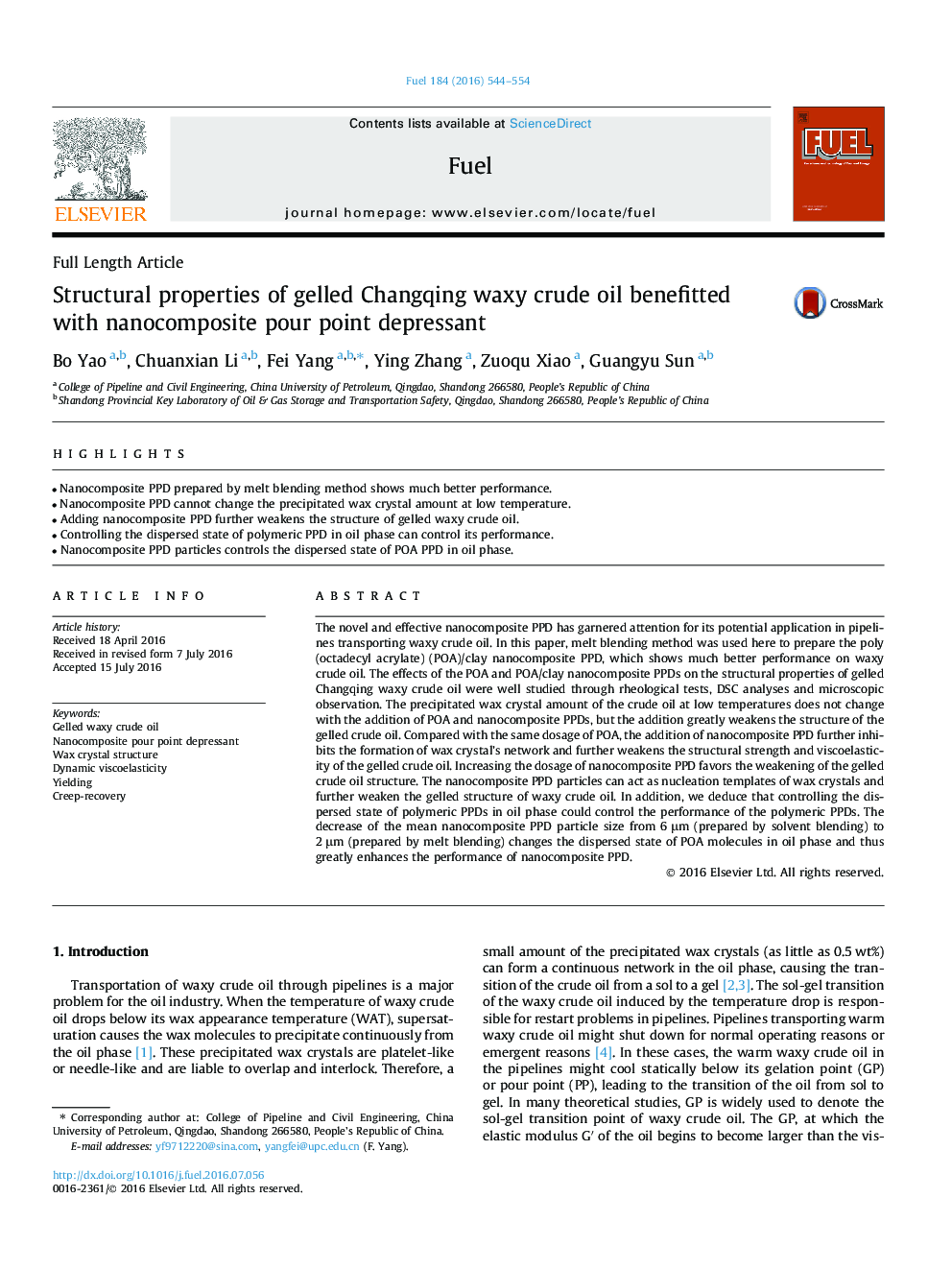| Article ID | Journal | Published Year | Pages | File Type |
|---|---|---|---|---|
| 6633078 | Fuel | 2016 | 11 Pages |
Abstract
The novel and effective nanocomposite PPD has garnered attention for its potential application in pipelines transporting waxy crude oil. In this paper, melt blending method was used here to prepare the poly(octadecyl acrylate) (POA)/clay nanocomposite PPD, which shows much better performance on waxy crude oil. The effects of the POA and POA/clay nanocomposite PPDs on the structural properties of gelled Changqing waxy crude oil were well studied through rheological tests, DSC analyses and microscopic observation. The precipitated wax crystal amount of the crude oil at low temperatures does not change with the addition of POA and nanocomposite PPDs, but the addition greatly weakens the structure of the gelled crude oil. Compared with the same dosage of POA, the addition of nanocomposite PPD further inhibits the formation of wax crystal's network and further weakens the structural strength and viscoelasticity of the gelled crude oil. Increasing the dosage of nanocomposite PPD favors the weakening of the gelled crude oil structure. The nanocomposite PPD particles can act as nucleation templates of wax crystals and further weaken the gelled structure of waxy crude oil. In addition, we deduce that controlling the dispersed state of polymeric PPDs in oil phase could control the performance of the polymeric PPDs. The decrease of the mean nanocomposite PPD particle size from 6 μm (prepared by solvent blending) to 2 μm (prepared by melt blending) changes the dispersed state of POA molecules in oil phase and thus greatly enhances the performance of nanocomposite PPD.
Related Topics
Physical Sciences and Engineering
Chemical Engineering
Chemical Engineering (General)
Authors
Bo Yao, Chuanxian Li, Fei Yang, Ying Zhang, Zuoqu Xiao, Guangyu Sun,
